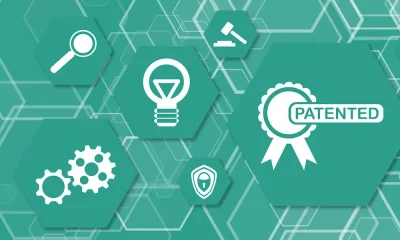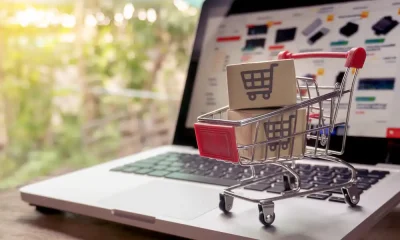General
Manufacturing 101: From Prototype to Production

If you’re like many successful business leaders, you have at least one great idea for a product floating around in your head. But turning that idea into an actual product can be overwhelming. That’s why we’re taking you from prototype to production with this guide to manufacturing.
Much work is involved in turning your prototype into an actual product. So, how do you go from prototype to manufacturing? Every step must be carefully considered for successful production, from prototyping to engineering, finance, and marketing.
In this business blog guide, we’ll walk you through the process of taking your prototype from concept to final manufactured product, including the following:
- Create a digital prototype
- Protect your ideas
- Do market research
- In-house or outsourced production
- Quality control
- Working prototype
- Testing and troubleshooting
- Regulatory process and certifications
- Launch product
Keep reading to learn the steps you’ll need to take to protect yourself and your investment as you turn your ideas into reality.
Create a Digital Prototype
Before you can ever produce a prototype or choose a manufacturer for your product, you first have to take your idea and turn it into reality. While you could sketch your ideas the old-fashioned way, a digital prototype is better. Not only is it easier to make changes and adjustments, but it is also easier to share copies with rapid prototyping.
Once your digital prototype has been selected and produced, it’s time to create a physical prototype, if possible.
Protect Your Ideas
You’re almost ready to start building a prototype once you’ve brought your ideas to life on a digital screen. But before you move on to that step, you must ensure that your ideas are legally protected from theft.
The United States Patent and Trademark Office offers patents on intellectual property that can help protect your ideas even before they become physical products. So, at this stage of the manufacturing process, acquiring a patent for your work is a good idea.
Get Backing, Test Your Product, or Run Market Research
Once you have a product prototype, it’s time to decide whether your product will perform or needs further development. You should be doing market research on prospective customers, testing your products, and working on getting any funding you still need to go forward and produce your product on a larger scale.
This stage is also your chance to make changes or adjustments to your product before you start investing more money into production.
Choose Between In-House Production and Outsourcing
Deciding whether to produce your product in-house or outsource is crucial in taking your product from prototype to production. Outsourcing production can be costly, limiting your product’s growth, and may require changes to your work. But producing your product on your own has drawbacks as well.
One important consideration is deciding whether you have the initial funds to buy the space and equipment and hire employees. Another is the risk involved in producing your product.
Could you be exposing your employees to hazardous materials? If so, you could be putting your company at risk of a costly lawsuit later. Even outsourcing your product could put you at risk of future legal trouble if part of your production involves hazardous materials like asbestos.
Researching all potential risks involved with production can help you determine potential problems. Then, if there’s any risk involved, consulting with a legal professional with experience dealing with cases involving hazardous substances can help you take action and protect your product and your company’s future success.
Choose the proper manufacturer.
You must choose the proper manufacturer for your product. While the cost is an essential factor to consider, other things like quality control, production timelines, and the availability of materials should not be overlooked when choosing a manufacturer.
Do research on potential manufacturers, reach out to them for quotes, and compare notes before selecting one for production.
Ensure Quality Is Maintained
Quality control is an essential aspect of mass production. You must ensure that your selected factory has reliable quality assurance processes so your product isn’t compromised. Make sure to audit their facilities and test the prototypes throughout different stages of production. This will help ensure no loss in quality when your product is manufactured.
Develop A Working Prototype
A functional proof of concept is essential in transitioning from a prototype to a manufactured product. This allows you to test and refine the design until it meets your standards and use it for demonstrations.
Make sure to update the 3D CAD files so that any tooling parts are identical to the prototypes. Also, don’t forget to test all the components and implement critical features like user guidance systems or assembly diagrams.
Testing And Troubleshooting
Testing and troubleshooting are integral to turning your prototype into a manufactured product. Before anything else, you should create test plans that cover every aspect from design to performance, including mechanical components, manufacturing processes, and product life cycle testing.
Ensure your team follows these tests and detailed flowcharts for troubleshooting in case of any problems. This will ensure that any unexpected issues can be identified promptly and fixed accordingly.
Regulatory Process And Certifications Needed
Once you have finished testing and refining your prototype, it’s essential to understand the regulatory process and any certifications that may be required to manufacture and market your product, ideally as Apple did with their iPhone invention. You must comply with all local, state, and federal regulations before beginning manufacturing the product in question.
Additionally, getting product certifications such as EMC or CE marking is necessary to sell products in specific regions or countries.
Launch Your Product
Now that you’ve developed your prototypes and taken measures to protect your ideas and your company from future legal trouble, it’s time to launch your product.
Not following each step on this list can have costly consequences, such as stealing your ideas if you fail to obtain patents or lawsuits from employees and customers over hazardous materials used in production. But if you have followed the steps with the proper marketing, you’ll be on the road to success.









